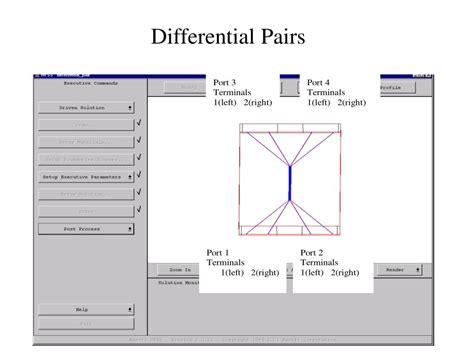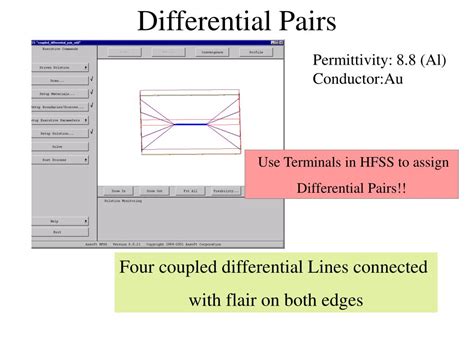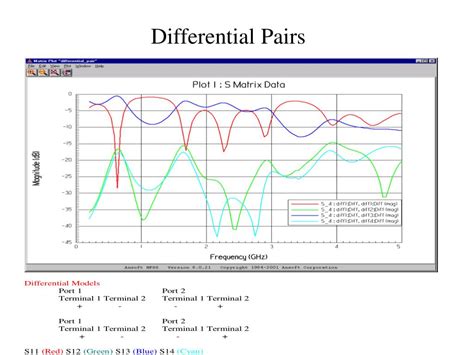Introduction to Differential Pairs and Differential Signals
In the world of electronics and data transmission, differential pairs and differential signals have become increasingly important. These concepts are widely used in high-speed digital communication systems, such as USB, Ethernet, and PCIe, to ensure reliable and efficient data transfer. This article will delve into the fundamentals of differential pairs and differential signals, their advantages, and their applications in modern electronic systems.
What are Differential Pairs?
A differential pair, also known as a balanced line, is a pair of electrical conductors that carry equal and opposite signals. The two conductors, often referred to as the positive (+) and negative (-) lines, are used to transmit a single signal. The signal on the positive line is the inverse of the signal on the negative line, maintaining a constant voltage difference between the two conductors.
Characteristics of Differential Pairs
Differential pairs have several key characteristics that make them suitable for high-speed data transmission:
-
Equal and opposite signals: The signals carried by the two conductors in a differential pair are equal in magnitude but opposite in polarity. This means that when the signal on the positive line is high, the signal on the negative line is low, and vice versa.
-
Constant voltage difference: The voltage difference between the positive and negative lines remains constant, regardless of the absolute voltage levels. This constant voltage difference is what carries the information in a differential signaling system.
-
Tight coupling: The two conductors in a differential pair are tightly coupled, often twisted together to maintain a consistent spacing between them. This tight coupling helps to minimize the impact of external electromagnetic interference (EMI) on the signals.
-
Controlled impedance: Differential pairs are designed to have a specific characteristic impedance, typically 100 ohms or 120 ohms, to ensure proper signal propagation and minimize reflections.
Advantages of Differential Pairs
Using differential pairs for data transmission offers several advantages over single-ended signaling:
-
Noise immunity: Differential pairs are highly resistant to common-mode noise, such as EMI and crosstalk. Any noise that affects both conductors equally will be canceled out when the receiver subtracts the negative signal from the positive signal.
-
Reduced electromagnetic interference: Because the currents flowing through the two conductors are equal and opposite, the electromagnetic fields generated by the differential pair largely cancel each other out. This reduces the amount of EMI emitted by the system, making it easier to comply with electromagnetic compatibility (EMC) regulations.
-
Longer transmission distances: Differential signaling allows for longer transmission distances compared to single-ended signaling, as the constant voltage difference between the conductors is less susceptible to attenuation and distortion.
-
Higher data rates: Differential pairs can support higher data rates than single-ended signals, as the reduced noise and improved signal integrity allow for faster switching speeds and shorter bit periods.

What are Differential Signals?
Differential signals are the electrical signals transmitted over differential pairs. These signals are characterized by their equal and opposite nature, with the information being carried by the voltage difference between the positive and negative lines.
How Differential Signals Work
In a differential signaling system, the transmitter generates two complementary signals: one for the positive line and one for the negative line. The positive signal is the inverse of the negative signal, maintaining a constant voltage difference between the two lines. The receiver then subtracts the negative signal from the positive signal to recover the original information.
For example, let’s consider a differential signaling system with a voltage swing of ±1 V. When the transmitter wants to send a logical “1,” it sets the positive line to +1 V and the negative line to -1 V, resulting in a voltage difference of 2 V. To send a logical “0,” the transmitter sets the positive line to -1 V and the negative line to +1 V, resulting in a voltage difference of -2 V.
The receiver, which is connected to both the positive and negative lines, subtracts the negative signal from the positive signal. In the case of a logical “1,” the receiver calculates: (+1 V) – (-1 V) = 2 V. For a logical “0,” the receiver calculates: (-1 V) – (+1 V) = -2 V. By comparing the voltage difference to a threshold value, typically 0 V, the receiver can determine whether the transmitted bit was a “1” or a “0.”
Common Differential Signaling Standards
Several differential signaling standards have been developed to ensure compatibility and interoperability between different devices and systems. Some of the most common standards include:
-
Low Voltage Differential Signaling (LVDS): LVDS is a high-speed, low-power differential signaling standard used in applications such as flat-panel displays, automotive infotainment systems, and industrial automation.
-
Current Mode Logic (CML): CML is a differential signaling standard that uses current rather than voltage to represent logical states. It is commonly used in high-speed digital communication systems, such as Ethernet and PCIe.
-
Differential CMOS (DCMOS): DCMOS is a low-voltage differential signaling standard based on the CMOS technology. It is used in applications that require low power consumption and high noise immunity, such as mobile devices and wearables.
-
Transition Minimized Differential Signaling (TMDS): TMDS is a differential signaling standard used in digital video interfaces, such as HDMI and DVI. It employs a unique encoding scheme to minimize the number of transitions in the transmitted signal, reducing EMI and power consumption.

Applications of Differential Pairs and Differential Signals
Differential pairs and differential signals are used in a wide range of electronic systems and applications, particularly those that require high-speed data transmission, noise immunity, and low EMI. Some common applications include:
-
USB: Universal Serial Bus (USB) is a popular interface standard for connecting peripherals to computers and other devices. USB 3.0 and later versions use differential signaling to achieve high data rates and improved noise immunity.
-
Ethernet: Ethernet is a widely used networking technology that connects devices in local area networks (LANs) and wide area networks (WANs). Gigabit Ethernet and faster variants employ differential signaling to support high-speed data transmission over long distances.
-
PCIe: Peripheral Component Interconnect Express (PCIe) is a high-speed serial interface standard used for connecting expansion cards and other devices to a computer’s motherboard. PCIe uses differential signaling to achieve high data rates and low latency.
-
HDMI and DisplayPort: High-Definition Multimedia Interface (HDMI) and DisplayPort are digital video interfaces that use differential signaling to transmit high-resolution video and audio data between devices, such as computers, TVs, and monitors.
-
Serial ATA (SATA): SATA is a computer bus interface that connects host bus adapters to mass storage devices, such as hard disk drives and solid-state drives. SATA uses differential signaling to support high data transfer rates and improved signal integrity.

Designing with Differential Pairs
When designing electronic systems that use differential pairs, several key considerations must be taken into account to ensure proper signal integrity and system performance.
PCB Layout Considerations
Proper PCB layout is crucial for maintaining the benefits of differential signaling. Some important guidelines for designing with differential pairs include:
-
Maintain consistent spacing: The two conductors in a differential pair should be kept as close together as possible and maintain a consistent spacing along their entire length. This helps to ensure tight coupling and minimize the impact of external noise sources.
-
Match conductor lengths: The lengths of the two conductors in a differential pair should be matched as closely as possible to minimize skew and ensure that the signals arrive at the receiver at the same time.
-
Avoid discontinuities: Discontinuities in the differential pair, such as vias, stubs, and sharp bends, should be avoided or minimized to prevent reflections and signal distortion.
-
Control impedance: The differential pair should be designed to have a specific characteristic impedance, typically 100 ohms or 120 ohms, to ensure proper signal propagation and minimize reflections. This can be achieved through careful control of the conductor width, spacing, and dielectric material properties.
Termination Strategies
Proper termination is essential for maintaining signal integrity in differential signaling systems. There are several common termination strategies used with differential pairs:
-
Parallel termination: In parallel termination, a resistor is placed between the positive and negative lines at the receiver end of the differential pair. The resistor value is chosen to match the characteristic impedance of the differential pair, typically 100 ohms or 120 ohms. Parallel termination helps to minimize reflections and ensure a clean signal at the receiver.
-
Series termination: Series termination involves placing a resistor in series with each conductor of the differential pair at the transmitter end. The resistor values are chosen to match the characteristic impedance of the differential pair minus the output impedance of the transmitter. Series termination helps to dampen reflections and reduce EMI.
-
AC coupling: AC coupling is a technique used to remove any DC offset between the transmitter and receiver in a differential signaling system. It involves placing a capacitor in series with each conductor of the differential pair, allowing AC signals to pass through while blocking DC offsets. AC coupling is often used in conjunction with parallel or series termination.
Frequently Asked Questions (FAQ)
-
What is the main advantage of using differential pairs over single-ended signaling?
The main advantage of using differential pairs over single-ended signaling is the increased noise immunity. Differential pairs are highly resistant to common-mode noise, such as EMI and crosstalk, as any noise that affects both conductors equally will be canceled out when the receiver subtracts the negative signal from the positive signal. -
How does differential signaling reduce electromagnetic interference (EMI)?
Differential signaling reduces EMI because the currents flowing through the two conductors are equal and opposite. This causes the electromagnetic fields generated by the differential pair to largely cancel each other out, reducing the overall EMI emitted by the system. -
What is the purpose of maintaining a consistent spacing between the conductors in a differential pair?
Maintaining a consistent spacing between the conductors in a differential pair helps to ensure tight coupling and minimize the impact of external noise sources. By keeping the conductors close together, any external noise will affect both conductors equally, allowing the receiver to cancel out the noise when it subtracts the negative signal from the positive signal. -
What is the difference between parallel termination and series termination in differential signaling systems?
Parallel termination involves placing a resistor between the positive and negative lines at the receiver end of the differential pair, while series termination involves placing a resistor in series with each conductor at the transmitter end. Parallel termination helps to minimize reflections and ensure a clean signal at the receiver, while series termination helps to dampen reflections and reduce EMI. -
What is the role of AC coupling in differential signaling systems?
AC coupling is used to remove any DC offset between the transmitter and receiver in a differential signaling system. It involves placing a capacitor in series with each conductor of the differential pair, allowing AC signals to pass through while blocking DC offsets. AC coupling is often used in conjunction with parallel or series termination to ensure proper signal integrity.
Conclusion
Differential pairs and differential signals play a crucial role in modern high-speed digital communication systems, offering several advantages over single-ended signaling, such as increased noise immunity, reduced EMI, longer transmission distances, and higher data rates. By understanding the principles behind differential signaling and following best practices for PCB layout and termination, designers can create robust and reliable electronic systems that take full advantage of the benefits offered by differential pairs.
As technology continues to advance and the demand for faster, more efficient data transmission grows, differential signaling will likely remain an essential tool in the electronics industry. By staying up-to-date with the latest developments and standards in differential signaling, engineers and designers can create cutting-edge products that meet the ever-increasing demands of the digital age.

No responses yet